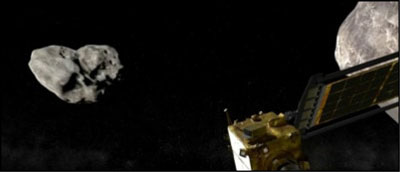A unique mission to test asteroid-deflecting tech-nology was launched late Tues-day night from the Vandenberg Space Force Base in California, NASA announced.
“Asteroid Dimorphos: we’re coming for you,” NASA tweeted, adding that the SpaceX Falcon 9 rocket blasted off at 1:21 am EST (0621 GMT).
The Double Asteroid Redirection Test, or DART, “will be the first demonstration of the ‘kinetic im-pactor’ technique in which a spacecraft deliberately collides with a known asteroid at high speed to change the asteroid’s motion in space,” said Lindley Johnson, NASA’s Planetary De-fense Officer, on NASA’s web-site.
“This technique is thought to be the most technologically mature approach for mitigating a poten-tially hazardous asteroid, and it will help planetary defense ex-perts refine asteroid kinetic im-pactor computer models, giving insight into how we could deflect potentially dangerous near-Earth objects in the future,” he added.—APP










